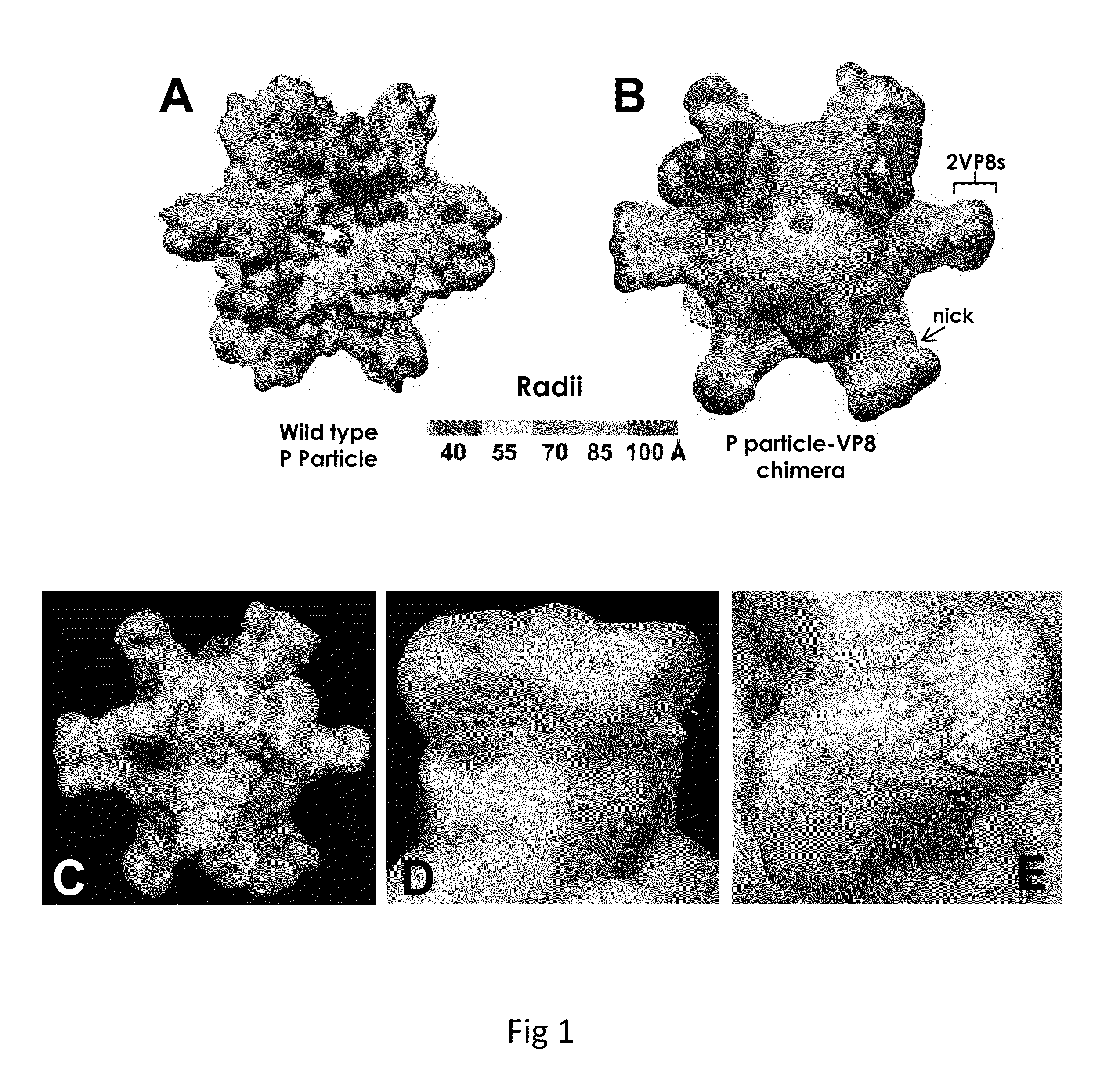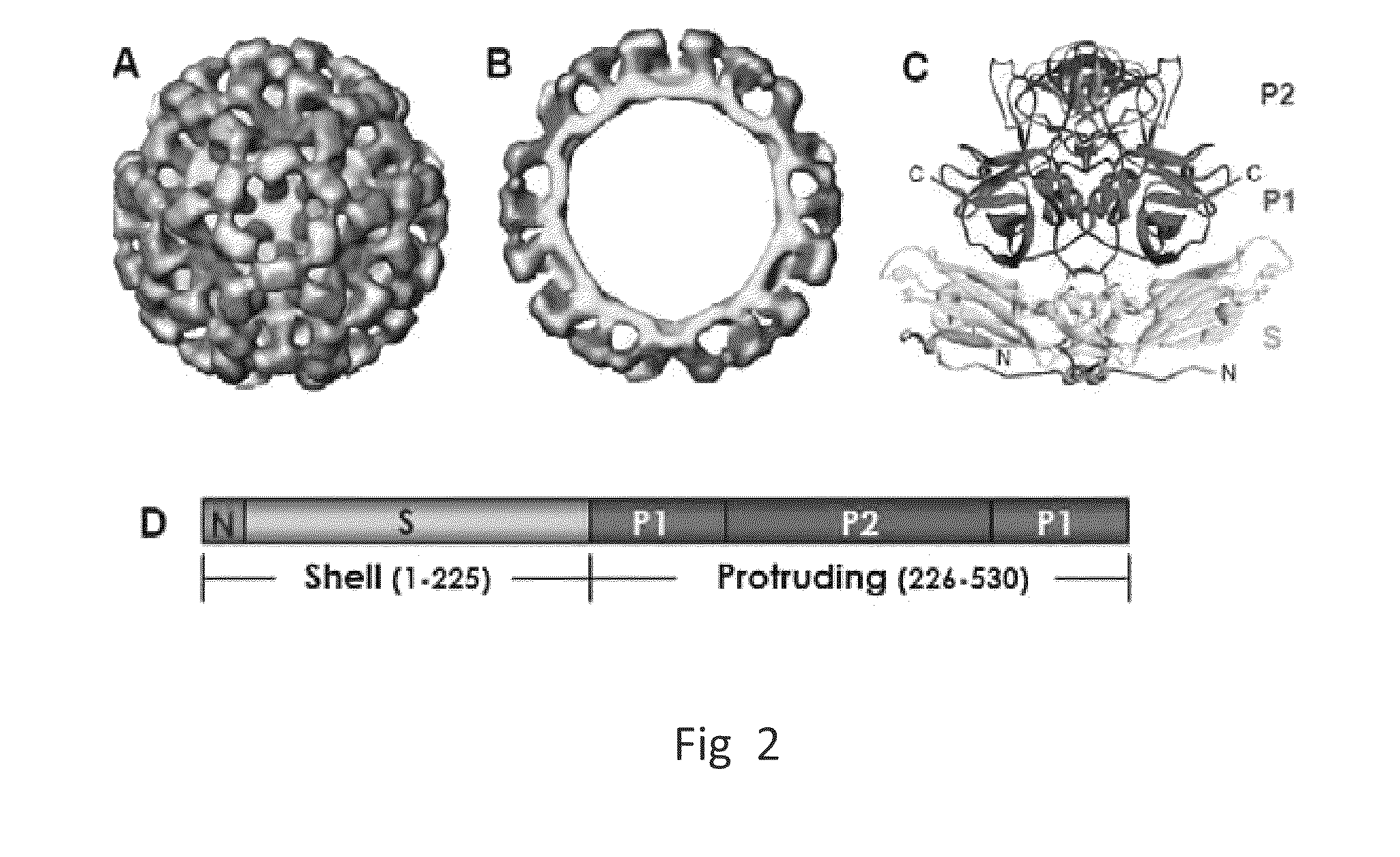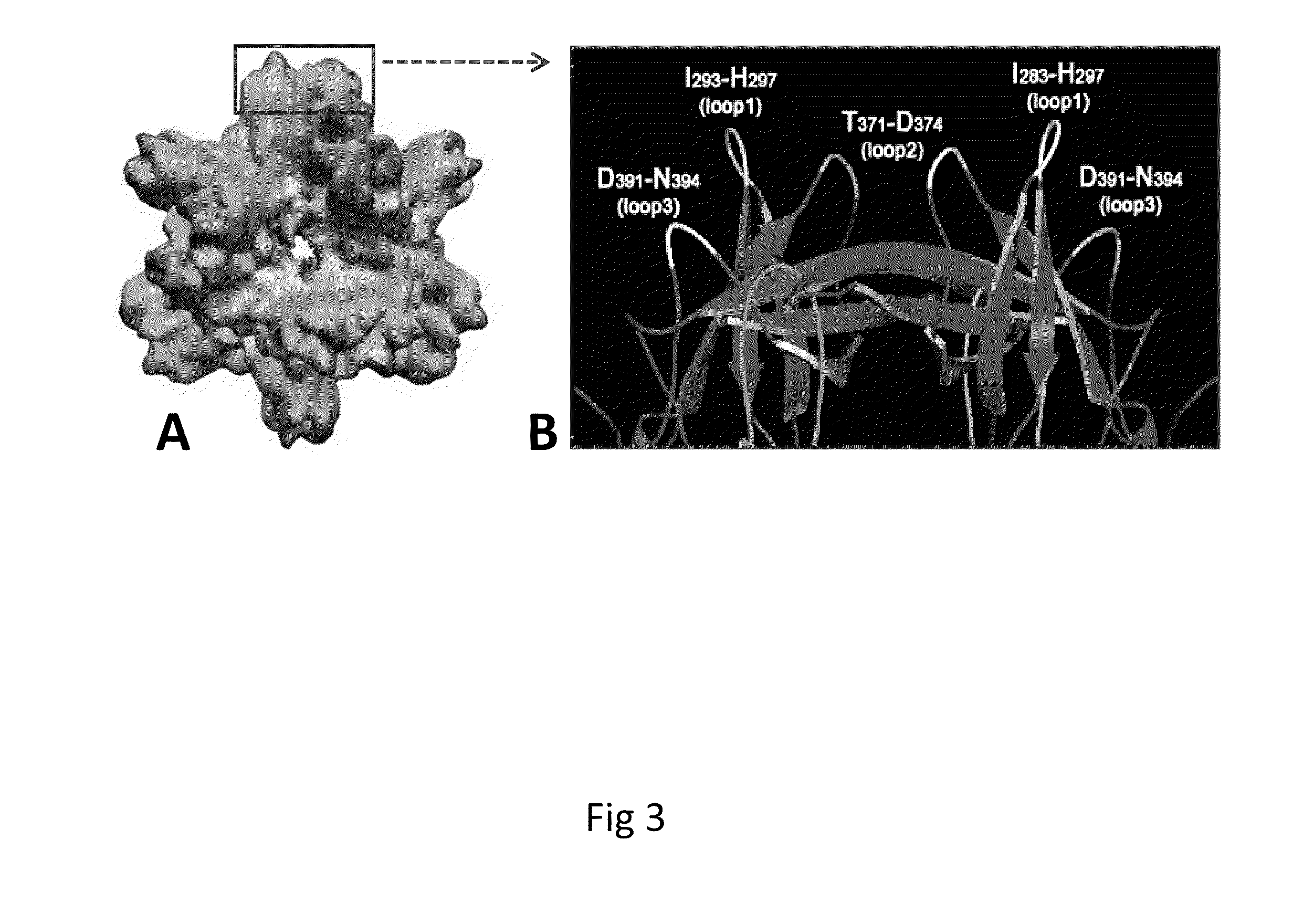Antigen-norovirus P-domain monomers and dimers, antigen-norovirus P-particle molecules, and methods for their making and use
a technology of antigen-norovirus and p-domain, which is applied in the field of antigen-norovirus p-domain monomers and dimers, antigen-norovirus p-particle molecules, and methods for their making and use, can solve the problems of inability to detect viruses with routine electron microscopy, hampered biochemical characterization of human nors, and low concentration of virus in stool, etc., to achieve high immunogenicity and easy production
- Summary
- Abstract
- Description
- Claims
- Application Information
AI Technical Summary
Benefits of technology
Problems solved by technology
Method used
Image
Examples
Embodiment Construction
[0057]As used herein, the terms “Norovirus,”“NOR”, “Norwalk-like virus,” or “NLV” refer to any virus of the Norovirus family, and includes, without limitation, the following: Norwalk Virus (“NV”), MOH, Mexico, VA 207, VA 387, 02-1419, C59, VA 115, Hawaii, Snow Mountain, Hillington, Toronto, Leeds, Amsterdam, Idaho Falls, Lordsdale, Grimsby, Southampton, Desert Shield, Birmingham, and White Rivercap.
[0058]As used herein, the terms “P-domain monomer” and “P-particle” refer to a wild type Norovirus P-domain monomer and wild type Norovirus P-particle, respectively.
[0059]As used herein, the terms “modified P-domain monomer” and “modified P-particle” refer to a Norovirus P-domain monomer and P-particle (respectively) that has been modified to insert one or more restriction sites (typically in pairs) into one or more of three surface loops present on each P-domain monomer by molecular cloning, thereby creating cloning cassettes in the surface loops which allow for the later insertion of fo...
PUM
| Property | Measurement | Unit |
|---|---|---|
| sizes | aaaaa | aaaaa |
| molecular weight | aaaaa | aaaaa |
| MW | aaaaa | aaaaa |
Abstract
Description
Claims
Application Information
 Login to View More
Login to View More - R&D
- Intellectual Property
- Life Sciences
- Materials
- Tech Scout
- Unparalleled Data Quality
- Higher Quality Content
- 60% Fewer Hallucinations
Browse by: Latest US Patents, China's latest patents, Technical Efficacy Thesaurus, Application Domain, Technology Topic, Popular Technical Reports.
© 2025 PatSnap. All rights reserved.Legal|Privacy policy|Modern Slavery Act Transparency Statement|Sitemap|About US| Contact US: help@patsnap.com



